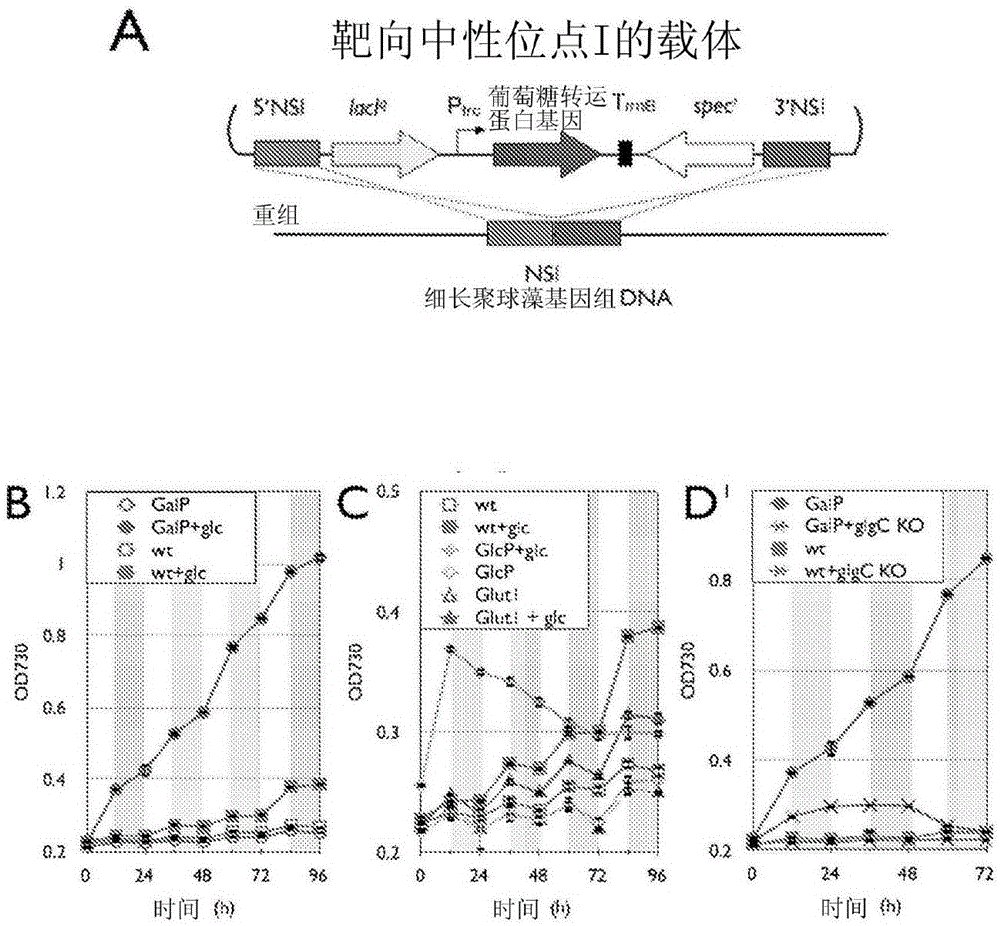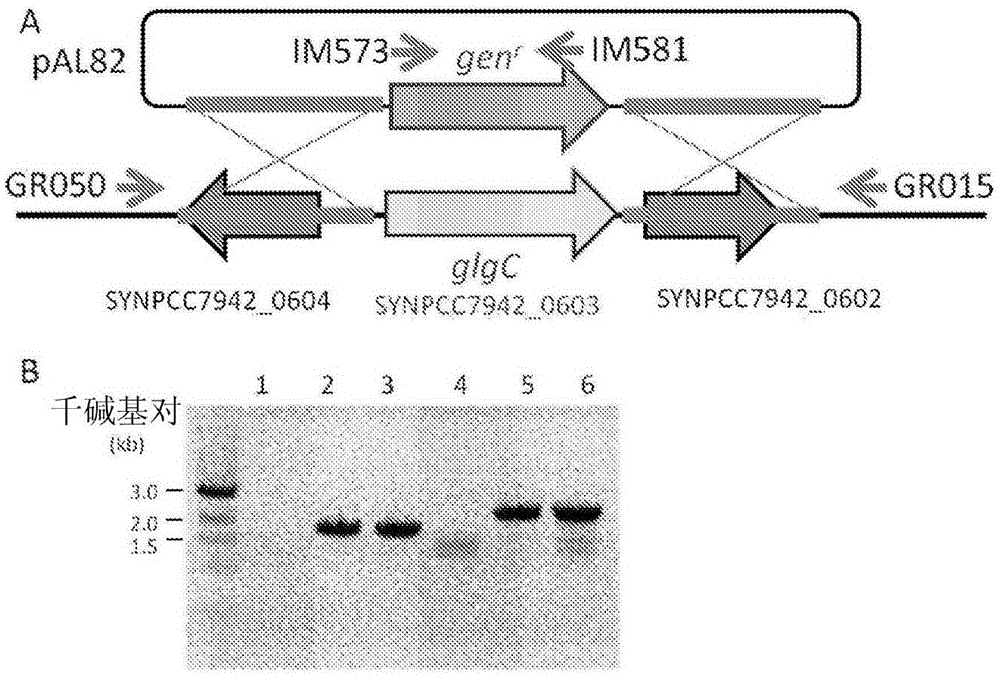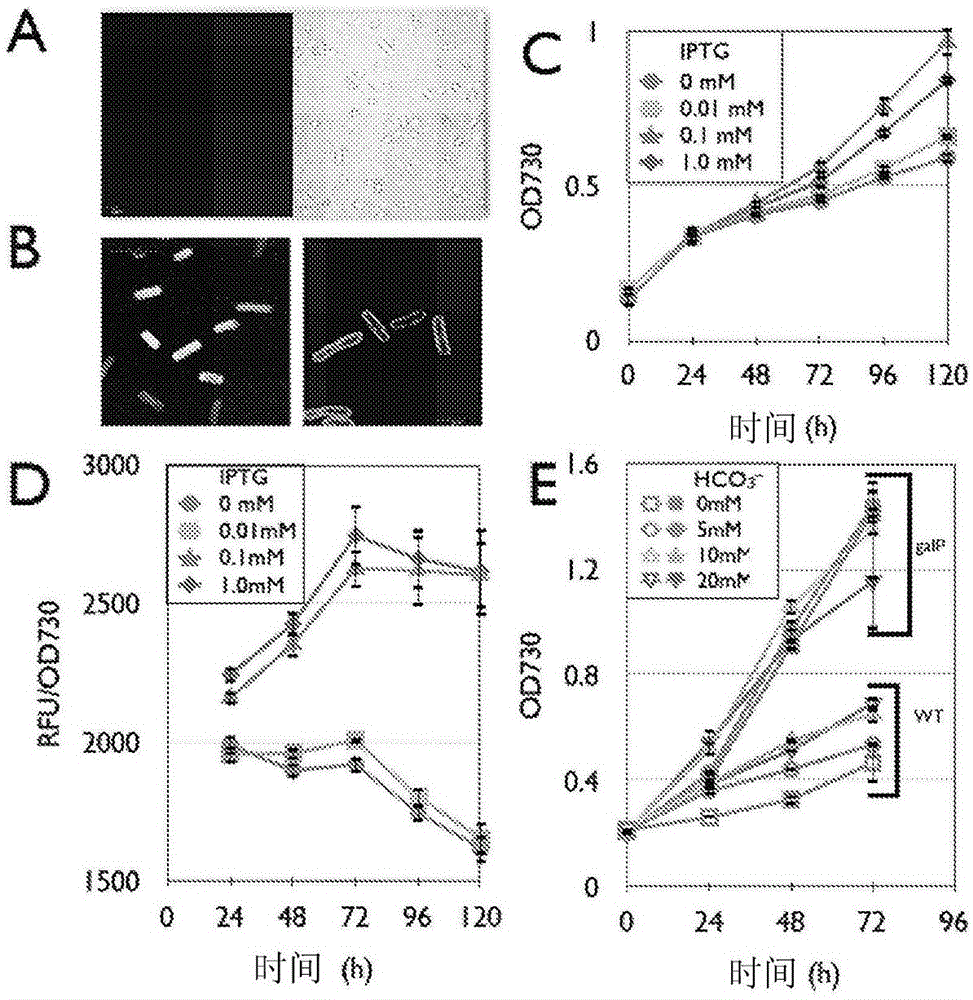Trophic conversion of photoautotrophic bacteria for improved diurnal properties
A technology of photoautotrophy and bacterial cells, which is applied in the direction of bacteria and plant gene improvement and application, and can solve the problems of rising production costs and low production rates of biofuels
- Summary
- Abstract
- Description
- Claims
- Application Information
AI Technical Summary
Problems solved by technology
Method used
Image
Examples
Embodiment 1
[0143] Example 1: Expression of glucose transporter in Synechococcus elongatus PCC7942
[0144] Photoautotrophic bacterial cells such as cyanobacteria can be developed as platforms for converting renewable solar energy into bulk chemicals, including biofuels. To achieve this transformation, a model cyanobacterium (Synechococcus elongatus PCC7942) was previously engineered to produce isobutyraldehyde and isobutanol (see PCT Publication WO 2010 / 071851). However, Synechococcus elongatus is an obligate photoautotroph that is strictly dependent on the production of photosynthesis-derived energy for growth and therefore cannot form biomass or products in the absence of light energy. For the conversion of any cyanobacterial fuel to be economically competitive, light energy must be provided by the sun, so it is only available for about 9 to 16 hours per day. To ameliorate this situation, three strains of Synechococcus elongatus were developed and each strain was grown on glucose, suc...
Embodiment 2
[0192] Example 2: Expression of carbohydrate transporter in Synechococcus elongatus PCC7942
[0193] As described in Example 1, the sugar transporters for alternative mono- and disaccharide sugars were cloned into the neutral site I (NSI) of Synechococcus elongatus PCC7942 at the P TRC under the control of the promoter. Cloned carbohydrate transporters include, but are not limited to:
[0194] Glucose transporters – the ptsI / ptsH / ptsG / crr PTS system of Escherichia coli, and the GLUT3 MFS transporter of late Homo sapiens.
[0195] Fructose transporter – GLUT5 MFS transporter in late Homo sapiens.
[0196] Mannose transporter-manX / manY / manZ PTS system of Escherichia coli. In addition, the uptake of mannose by glucose-specific transporters was also tested.
[0197] Galactose transporter-YjfF / ytfR / ytfT / ytfQ ABC system of Escherichia coli.
[0198] Xylose transporter-xylF / xylG / xylH ABC system of Escherichia coli.
[0199] Arabinose–araJ MFS transporter of Escherichia coli.
...
Embodiment 3
[0203] Example 3: Integration of metabolic genes into Synechococcus elongatus PCC7942
[0204] Downstream metabolic genes were integrated into the Synechococcus elongatus PCC7942 strain transformed with the sugar transporter of Example 2, thereby promoting the introduction of sugars into their central metabolism. By cloning individual carbohydrate-specific metabolism genes (in various combinations including single genes or the complete list) upstream of their corresponding carbohydrate transporters and integrating them into elongated polysaccharides, as described in Example 1, P TRC Under the control of the promoter, so as to complete the integration.
[0205] The following are non-limiting examples of carbohydrates and their corresponding metabolic genes:
[0206] Glucose – Glucokinase (GLK) of Escherichia coli for the phosphorylation of glucose to glucose-6-phosphate.
[0207] Fructose – Mannose (fructose) kinase (mak) of Escherichia coli and fructokinase (cscK) of Escher...
PUM
 Login to View More
Login to View More Abstract
Description
Claims
Application Information
 Login to View More
Login to View More - R&D
- Intellectual Property
- Life Sciences
- Materials
- Tech Scout
- Unparalleled Data Quality
- Higher Quality Content
- 60% Fewer Hallucinations
Browse by: Latest US Patents, China's latest patents, Technical Efficacy Thesaurus, Application Domain, Technology Topic, Popular Technical Reports.
© 2025 PatSnap. All rights reserved.Legal|Privacy policy|Modern Slavery Act Transparency Statement|Sitemap|About US| Contact US: help@patsnap.com



